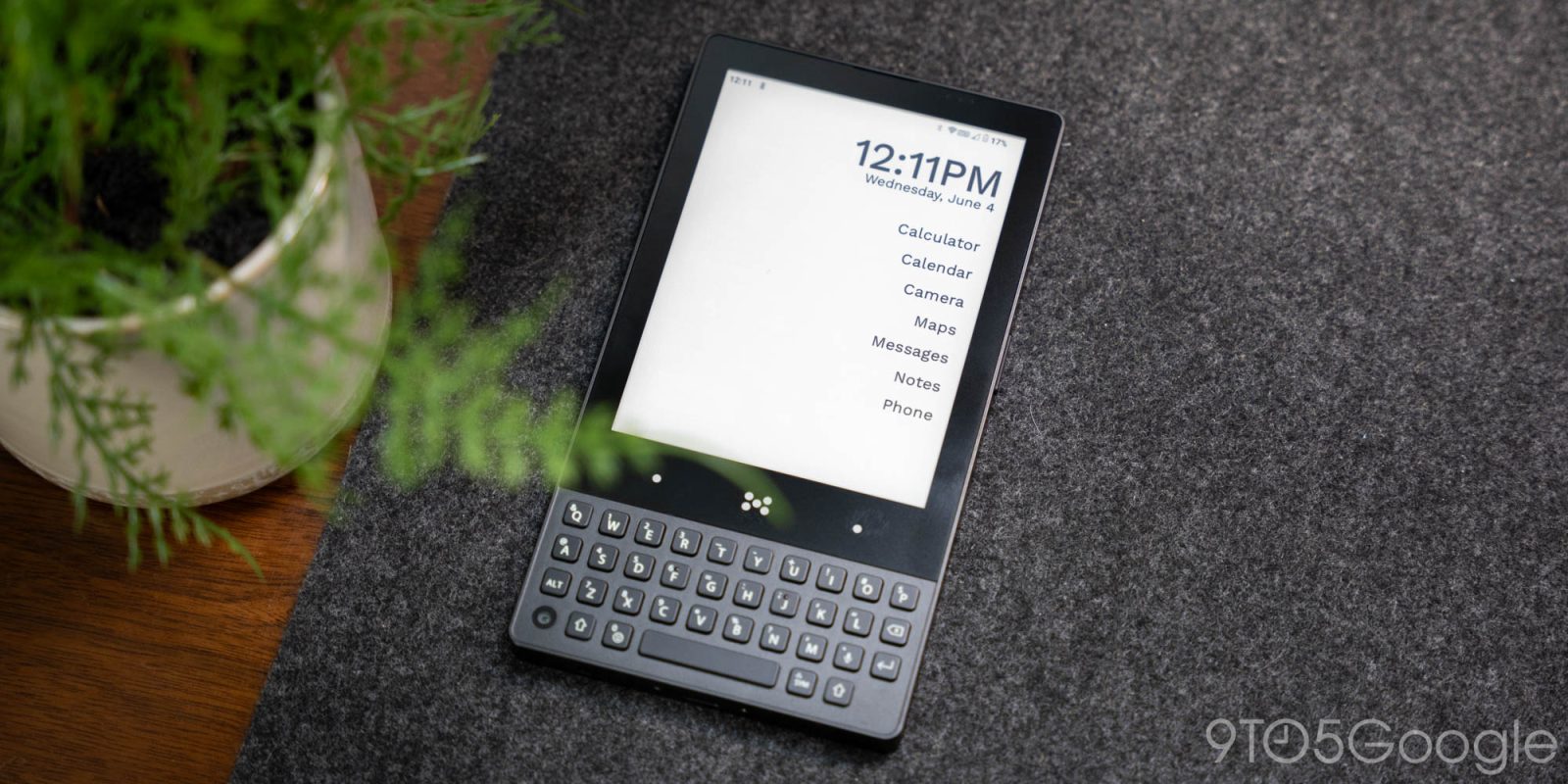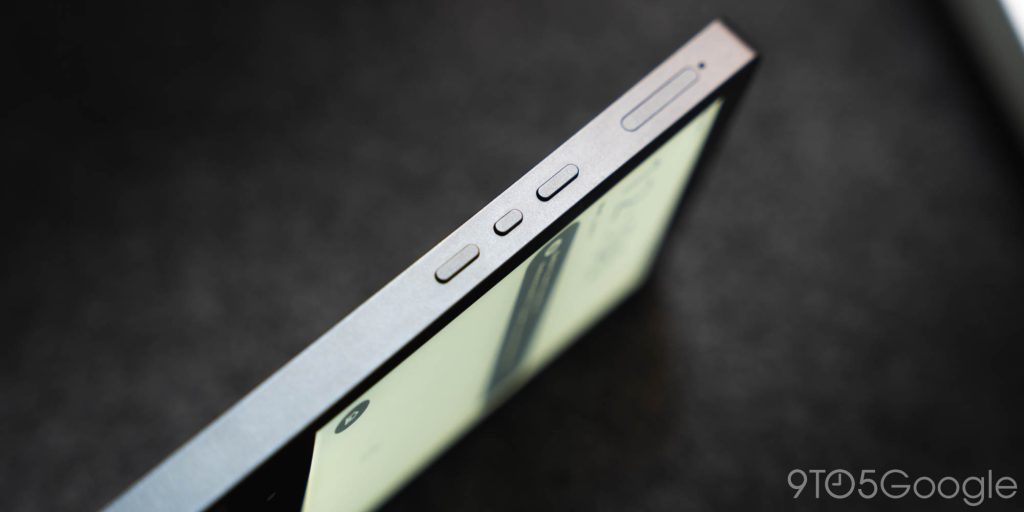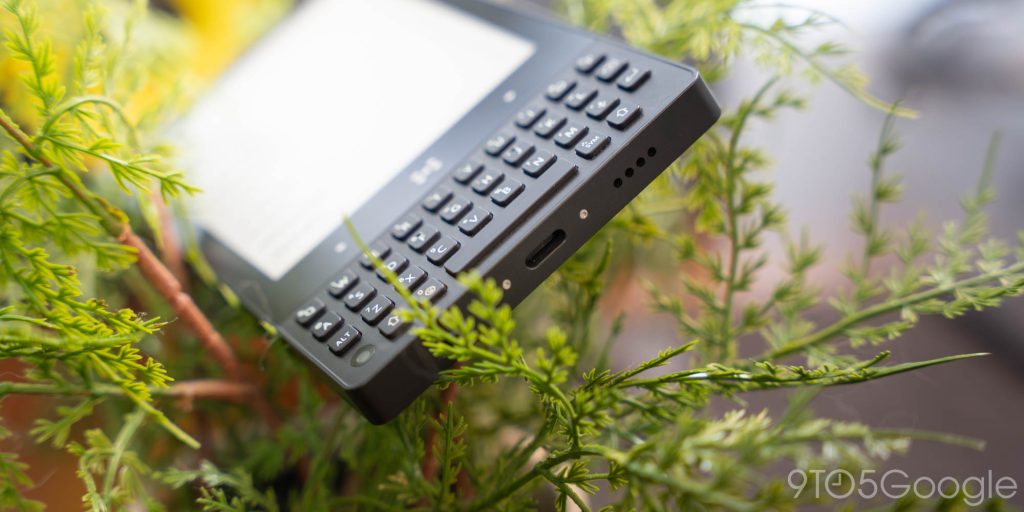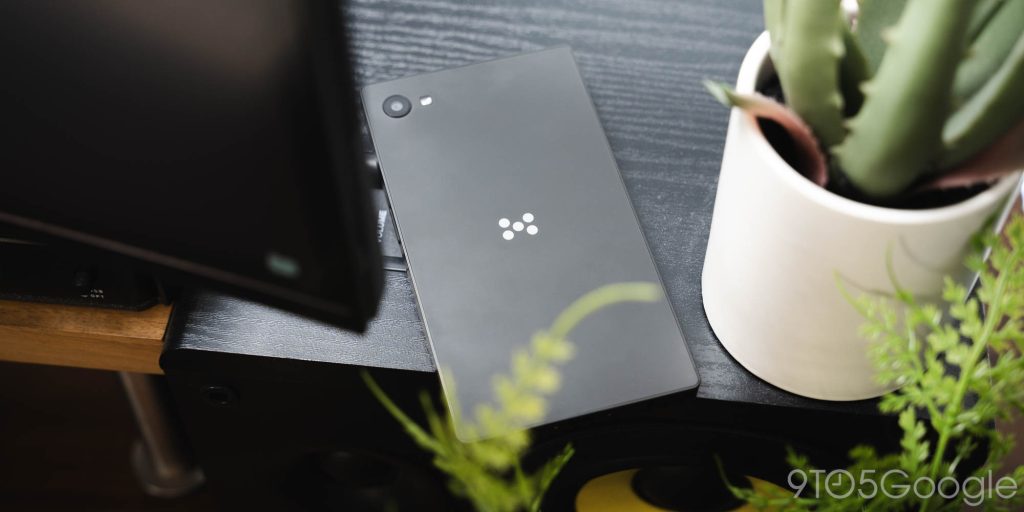
Minimal has set out to fix a problem. Social media fatigue, doom-scrolling, and endless screen time are side effects of efficient phones, and the Minimal Phone’s entire purpose is to slow you down. It does that, but it also makes you actively hate using your phone.
The result is the Minimal Phone – an e-paper phone that runs on Android. It carries a familiar design with nods back to the original Blackberry or other devices circa 2005. A full QWERTY keyboard graces the bottom of the phone while a small e-reader screen takes up the majority of real estate towards the top.
The phone has every essential capability that a modern phone has, including the ability to connect to 4G LTE networks.
Minimal proudly positions their new e-paper phone as the anti-device. The company sites data on its website claiming that users spend over 6 hours on their phones each day, and Minimal wants to offer a solution that curbs that number, or outright deletes it.
The Minimal Phone does such a good job that I found myself with it in hand as little as possible just to avoid the hurdles of using it. Does that accomplish the company’s goal? Sure, but it also makes for an abrasive experience.
Hardware
The Minimal Phone takes on more of a retro-minimalist design with an adorable keyboard situated at the bottom 25% of the device. The phone itself is encased in plastic, which feels a little on the cheaper side. I understand what the company is going for with a minimal design made of something lightweight, but the material doesn’t feel high-end in the hand.

Further, the boxy nature of the phone makes it a little sharp around the edges. It isn’t necessarily uncomfortable to use because it’s so light, but applying any force to your palm wouldn’t feel great. It’s definitely pleasing to look at, though, and it gives off that pre-iPhone vibe a lot of people find nostalgic.
For as simple as the device is, one of the nicest touches made was the inclusion of a fingerprint sensor. It’s surprisingly accurate and offers a much easier way to bypass the lock screen, even more so than a generic smartphone. It acts as a power button, as well, and the display offers an AOD mode by nature of it being an e-reader screen.
On the other side of the power key is a set of volume buttons and a refresh key. That key, when tapped, allows you to refresh the display for the best resolution, or it can be held down to bring up the display settings. More on that later.



Minimal didn’t go the route of most companies when features sit on the chopping block. That’s clear simply because this phone houses a 3.5mm headphone jack for wired earbuds. That’s a major feature that often gets overlooked, and it’s nice to see it present.
Performance
Generally, our review recipe calls for the display to be mentioned within the hardware section, but the Minimal Phone’s display is so intrinsically linked to the device’s overall experience that it has to be mentioned alongside the phone’s performance.
The display, on paper, is a 4.3-inch screen with a resolution of 600 x 800 and 230 ppi. That isn’t impressive for any other OLED display, but this screen is powered by an e-paper panel, which showcases only shades of black and white. With that, it also carries a natively low refresh rate somewhere in the 1 to 2 fps range.

The idea is that the Minimal Phone’s display allows for necessary actions in any app you can get from the Google Play Store. Along with that, you’re not going to strain your eyes, and the battery will last much longer, making the device a reliable companion and not a burden. An e-paper display is perfect for that.
In addition, the Minimal company was able to develop a reskin of Android that offers only necessary shortcuts on the home screen. Swiping in either direction will present you with an app of your choosing, which is a nice touch that keeps the experience clean.
The capacitive buttons below the screen act as shortcuts for home, back, and recent apps.
In theory, the experience sounds amazing. I can check my emails, play music, and take notes with the full physical keyboard all while not getting sucked into doomscrolling socials or spending too much time on my device. It is the minimalist’s phone.
The issue I have is this – because the screen operates at such a slow refresh rate, the phone often struggles with registering touches correctly. If I ever went too fast, the screen would ignore input. It actively slows the user down, which can be a positive for those who want that out of a device, or a negative if you’re trying to send off a time-sensitive email.
This is a common side effect of e-paper screens, and Minimal is using it to its advantage. Still, it makes for an uncomfortable experience. No touch truly matters, and there is no swiping up or down slowly to barely move the page. Every habit users have developed over the past decade of using modern devices is thrown out the window.
It’s not minimal, it’s depriving.

Further, the keyboard was not immune to input delay. That may also be because of the learning curve it takes to get used to the unique size. After some time, it became easier, but in the end, it still felt that the keys were a little bit too stiff to use for extended periods.
Even with settings tuned correctly, the display still felt like a let-down. Faster refresh rates still didn’t feel fast enough, and there was a significant amount of ghosting throughout every app. That isn’t unique to this phone, though. It comes with the territory of some e-reader displays.
On another note, the Minimal Phone does have AOD, and with an e-reader display, it takes up very little battery power. Ironically, the AOD does not update unless a notification comes in. If no notifications come in, the clock never refreshes, and the purpose of an always-on display is moot. That’s a small point of annoyance, but it sums up a lot of the issues I have with this phone’s execution.
I think Minimal could have solved a lot of these complaints with a switch to a physical directional pad, like what phones in the mid-2000s had. The screen could still register touch for complex app design, but a d-pad for messaging and calls could effectively create a more intentional experience.
Battery
Here’s where the Minimal Phone shines a little bit of that silver lining. Despite being a simple device, the phone still packs a 3,000mAh battery, which is enough to power a modern smartphone for at least half of the day. Add that to an e-paper device, and you have a pretty big jump in overall battery life.
With a full charge, while using the keyboard off and on, I could squeeze around two or three days. The average experience might differ, considering that this phone is meant to be used sparingly. Still, it’s likely to get several days of life when used as intended.
That has quickly become one of the redeeming features of the phone. For something that needs to be with you at all times, the Minimal Phone becomes the essential bit of that with lasting usability. It isn’t draining power at all times and it’s there when you need it.
Final thoughts
Overall, this is a tough one. The Minimal Phone is so clearly designed to prevent long hours of usage and getting sucked into scrolling until you develop arthritis in your thumb. But by the same token, those guardrails prevent the user from having a great experience with the device. So, it’s really all about making sacrifices.
The sacrifices you’ll make are the ability to interact with your device at a modern or comfortable pace and see incredible detail in images in your apps. You will not sacrifice the ability to call or text on your preferred network and access to any app you can get your hands on, though the overarching experience might falter.

The Minimal Phone simply feels under-engineered, even for what it’s supposed to be. The cost feels like a stretch at $400 during the pre-order phase ($500 MSRP). If it had a slightly more premium design with more intuitive functions that facilitated a simple yet effective experience, the price might be justified.
The result was a phone that I definitely wanted to use less, so I guess it works.
FTC: We use income earning auto affiliate links. More.





Comments